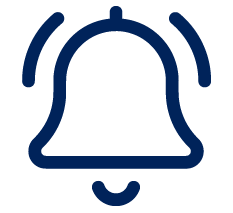Recognizing Common Signs and Symptoms
As an EA, recognizing the signs of low blood sugar (hypoglycemia) and high blood sugar (hyperglycemia) is critical. These conditions may look different, but both require prompt action to keep students safe.
Always follow the students’ individualized health plan for specific instructions.

Signs of Low Blood Sugar
Low blood sugar can come on quickly and becomes serious within minutes. This is the most immediate risk for students with diabetes at school.
Common signs include:
- Shakiness or trembling
- Sweating or chills
- Hunger
- Drowsiness or fatigue
- Pale skin
- Confusion or difficulty focusing
- Irritability or mood swings
- Headache or dizziness

Safety-Pro Tip
Low blood sugar needs fast action. Treat it right away to prevent a medical emergency.

Signs of High Blood Sugar
High blood sugar builds more slowly. It may not seem urgent at first, but it still needs attention.
Common signs include:
- Increased thirst
- Frequent urination
- Blurred vision
- Stomach pain or nausea
- Tiredness or sluggishness

Reminder
High blood sugar isn’t always an emergency, but it should still be monitored closely. Encourage water intake and follow the student’s health plan.
Identifying Severe Cases
Severe symptoms mean that blood sugar is dangerously high or low. These situations can become life-threatening. It’s critical to know when to get help.
Severe Hypoglycemia
When blood sugar drops to a dangerously low level (below 2.8mmol/L), students may show sudden and serious symptoms that require immediate action.
Signs of dangerously low blood sugar include:
- Blurry vision
- Clumsiness and slurred speech
- Loss of consciousness
- Inability to swallow
- Seizures

Call 911 immediately if any of these signs are present and follow the emergency plan.
Severe Hyperglycemia and Diabetic Ketoacidosis (DKA)
When blood sugar stays very high (typically above 14 mmol/L), it can lead to diabetic ketoacidosis (DKA), a life-threatening emergency.
Signs of DKA include:
- Flushed or hot, dry skin
- A fruity or sweet smell on the breath
- Feeling very drowsy or hard to wake up
- Confusion
- Lack of interest in usual activities
- Rapid, deep breathing
- Loss of appetite
- Abdominal pain
- Vomiting

Call 911 immediately if any of these signs are present and follow the emergency plan.

Safety-Pro Tip
In school settings, it’s important not to wait for a specific number if the student is showing signs of severe hypoglycemia or hyperglycemia—you act based on symptoms, not just the reading.